How to Identify and Manage Hereditary Diseases in Alpacas
To identify hereditary diseases in your alpacas, watch for symptoms like lethargy, nasal blockage, or abnormal gait, and keep detailed health records. Genetic testing helps detect carriers and guides responsible breeding to reduce congenital issues. Regular veterinary check-ups and monitoring will catch early signs, while proper nutrition and environment support their health. Collaborate closely with your vet to manage and prevent these conditions effectively. Stick around, and you’ll uncover more ways to protect your herd’s well-being.
Key Takeaways
- Recognize signs like nasal blockage, lethargy, or abnormal gait as indicators of hereditary diseases in alpacas.
- Use genetic testing to identify carriers and inform breeding strategies that prioritize health traits.
- Perform regular veterinary health evaluations and maintain detailed records to detect early symptoms.
- Provide balanced nutrition rich in vitamins, especially Vitamin D, and ensure toxin-free environments for pregnant females.
- Collaborate closely with veterinarians for screening, timely interventions, and access to specialized diagnostic resources.
Recognizing Common Hereditary Conditions in Alpacas
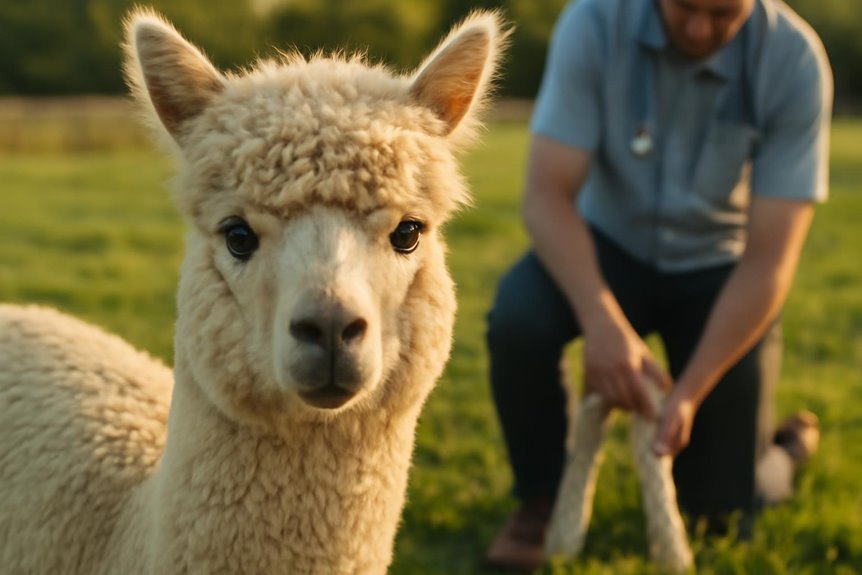
How can you tell if an alpaca is affected by a hereditary condition? You might notice signs of congenital defects like choanal atresia, which can block nasal passages and often require surgical intervention. Genetic predispositions play a key role in such conditions, so understanding your breeding stock’s background is essential. Neoplasia, such as lymphosarcoma, may also affect alpacas, presenting with variable symptoms depending on the organs involved. Vitamin D deficiency is another concern, especially in young alpacas, leading to rickets characterized by lethargy and abnormal gait. Proper nutritional management helps prevent this. Recognizing these hereditary conditions early allows you to manage them effectively and make informed decisions to reduce incidence in future generations through careful selection of breeding stock.
Genetic Testing and Breeding Strategies
Although it might seem complex at first, genetic testing offers you a powerful tool to identify carriers of hereditary diseases in alpacas, helping you make informed breeding decisions. By analyzing genetic polymorphism, you can establish parentage and spot potential defects early. Effective breeding strategies focus on prioritizing health traits over fleece qualities, which reduces congenital anomalies. Targeted testing of candidate genes, like SLC35A3 linked to vertebral malformations, allows you to mitigate inherited disorders by selecting healthier breeding pairs. Maintaining genetic diversity is essential; regular evaluation guarantees a robust gene pool, lowering disease risks in future generations. By integrating these approaches, you’ll contribute to healthier populations of alpacas while minimizing the impact of hereditary diseases.
Monitoring and Early Detection Techniques
When you monitor your alpacas regularly, subtle health changes that hint at hereditary diseases become easier to spot early. By keeping detailed health records and watching for symptoms like lethargy, rapid breathing, or reluctance to stand, you can catch issues before they worsen. Routine veterinary health evaluations are essential—they provide professional assessments and diagnostic tests that support early detection. Incorporating genetic screening and pedigree analysis further aids in identifying hereditary diseases within your herd. These tools combined help you make informed decisions about breeding and care. Regular weighing and condition scoring also reveal subtle changes that might otherwise go unnoticed. Overall, consistent monitoring paired with veterinary input guarantees you manage hereditary diseases proactively, safeguarding your alpacas’ health and well-being.
Nutritional and Environmental Management
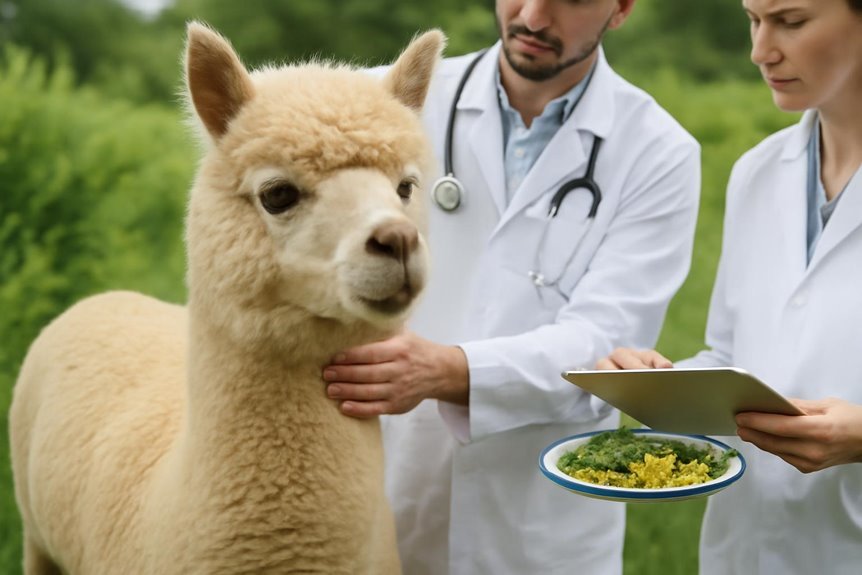
Since proper nutrition and environment directly impact your alpacas’ health, managing these factors is essential to preventing hereditary diseases. Focus on nutritional management by providing balanced diets rich in vitamins and minerals—especially Vitamin D—to avoid issues like rickets and osteomalacia. Be mindful of environmental factors; pregnant females must have a safe, toxin-free space to reduce congenital defects. Genetic selection is vital, so prioritize animals with known health histories and use genetic testing to lower the risk of passing hereditary diseases. Regular monitoring for nutritional deficiencies, such as lethargy or abnormal growth, helps catch problems early. Maintain good husbandry practices, including effective parasite control and vaccination protocols, to minimize stress and support overall health, further reducing hereditary disease risks in your herd.
Collaborating With Veterinary Professionals
Because hereditary diseases can be complex and subtle, working closely with veterinary professionals is crucial for protecting your alpacas’ health. Veterinary assistance enables early detection through regular health evaluations that identify physical abnormalities or behavioral changes you might miss. Collaborate on genetic testing and genetic screening programs to pinpoint carriers of hereditary diseases, informing responsible breeding strategies that enhance herd health. Maintaining open communication with your vet guarantees timely interventions and tailored management practices for affected animals. Access to specialty clinics and diagnostic labs further improves your understanding of specific conditions, allowing you to implement effective prevention and treatment plans. By partnering with veterinary experts, you’ll better manage hereditary diseases, safeguarding your alpacas’ well-being and the overall health of your herd.
Frequently Asked Questions
What Are the Birth Defects of Alpacas?
Birth defects in alpacas, like hidden cracks in a gem, include choanal atresia and maxillofacial dysgenesis. You should focus on health screenings, veterinary assessments, and careful breeding practices to manage genetic disorders and congenital issues.
How Do You Treat Mycoplasma Haemolamae in Alpacas?
You’ll diagnose Mycoplasma haemolamae through blood smears and treat with tetracycline antibiotics, considering antibiotic resistance. Focus on nutritional support, stress management, environmental factors, caregiver education, and alpaca health monitoring for long-term management and prevention.
How to Prevent Leptospirosis in Llamas and Alpacas?
You should follow leptospirosis prevention strategies like llama vaccination protocols, alpaca hygiene practices, water source management, pasture rotation techniques, disease surveillance programs, environmental control measures, stress reduction methods, antibiotic use guidelines, and overall herd management practices to keep your herd safe.
What Are the Symptoms of Johnes Disease in Alpacas?
You’ll notice Johne’s disease clinical symptoms like progressive weight loss, diarrhea signs, and appetite changes. Lethargy indicators are common too. Chronic infections spread via transmission routes, so testing methods and management strategies are essential to control it.

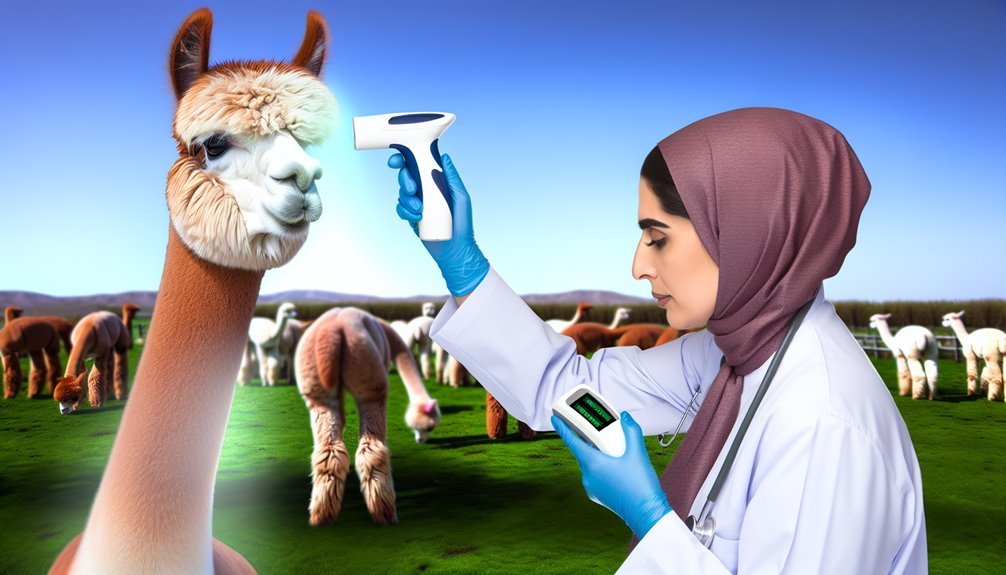


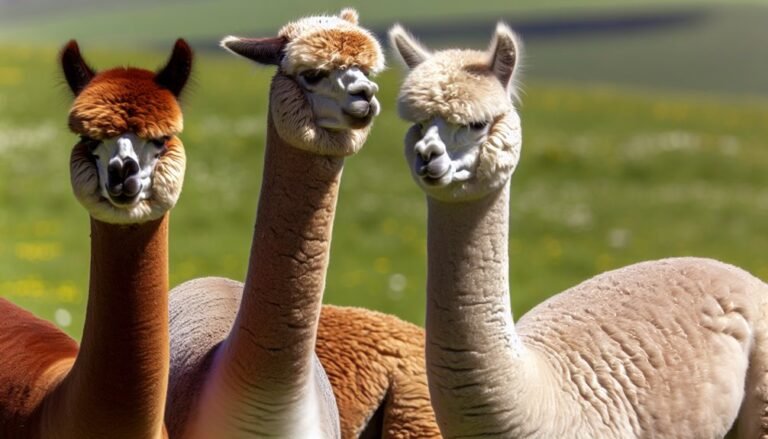
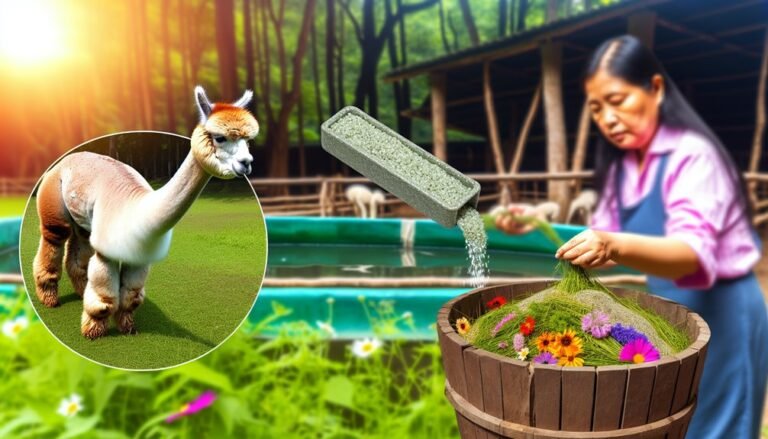


Our picks
Alpaca & Wool Felted Sole Inserts: Comfy Upgrade?
Best Alpaca Socks for Hiking: Ultimate Comfort and Durability on Trails
Best Alpaca Halter for Comfort and Control